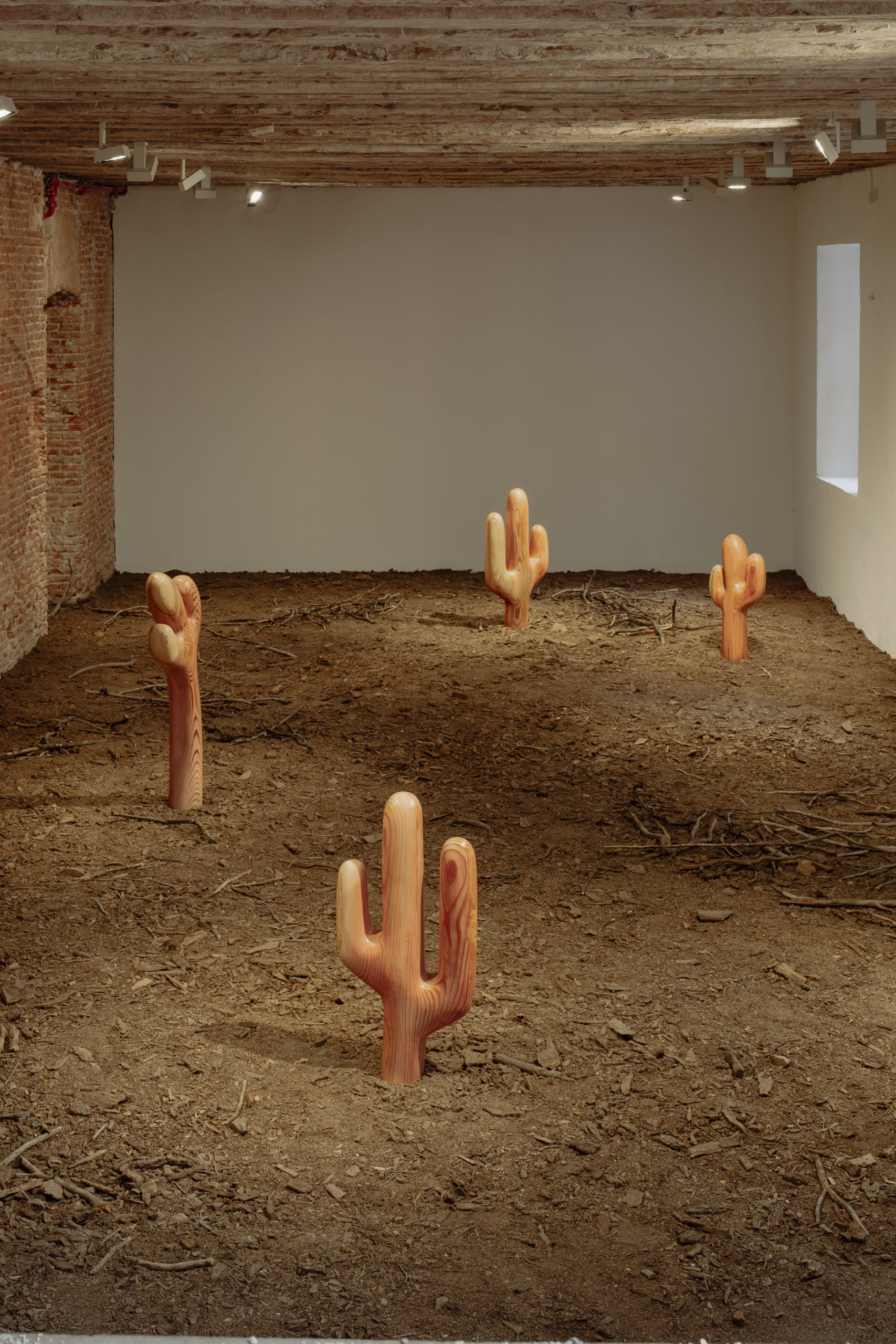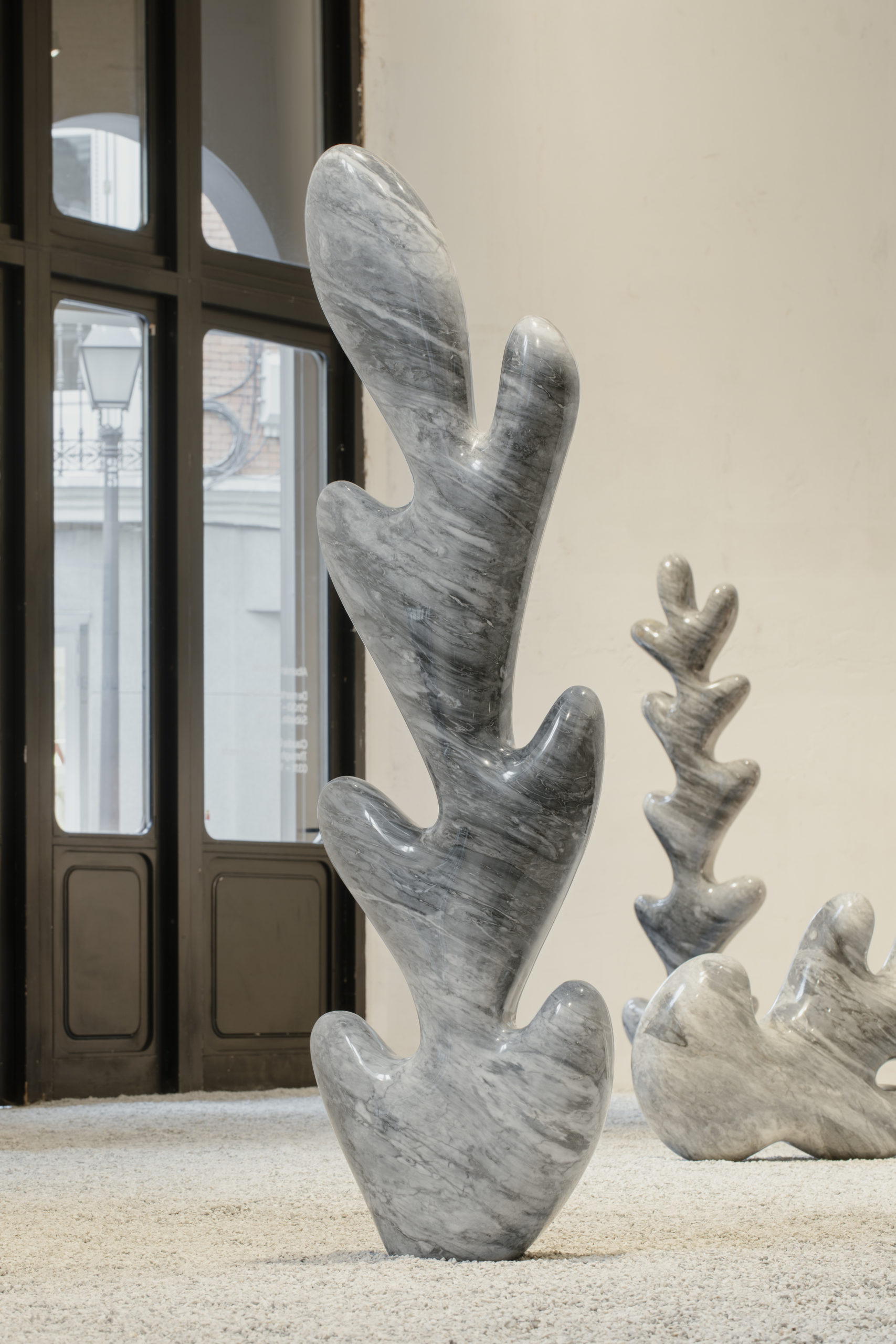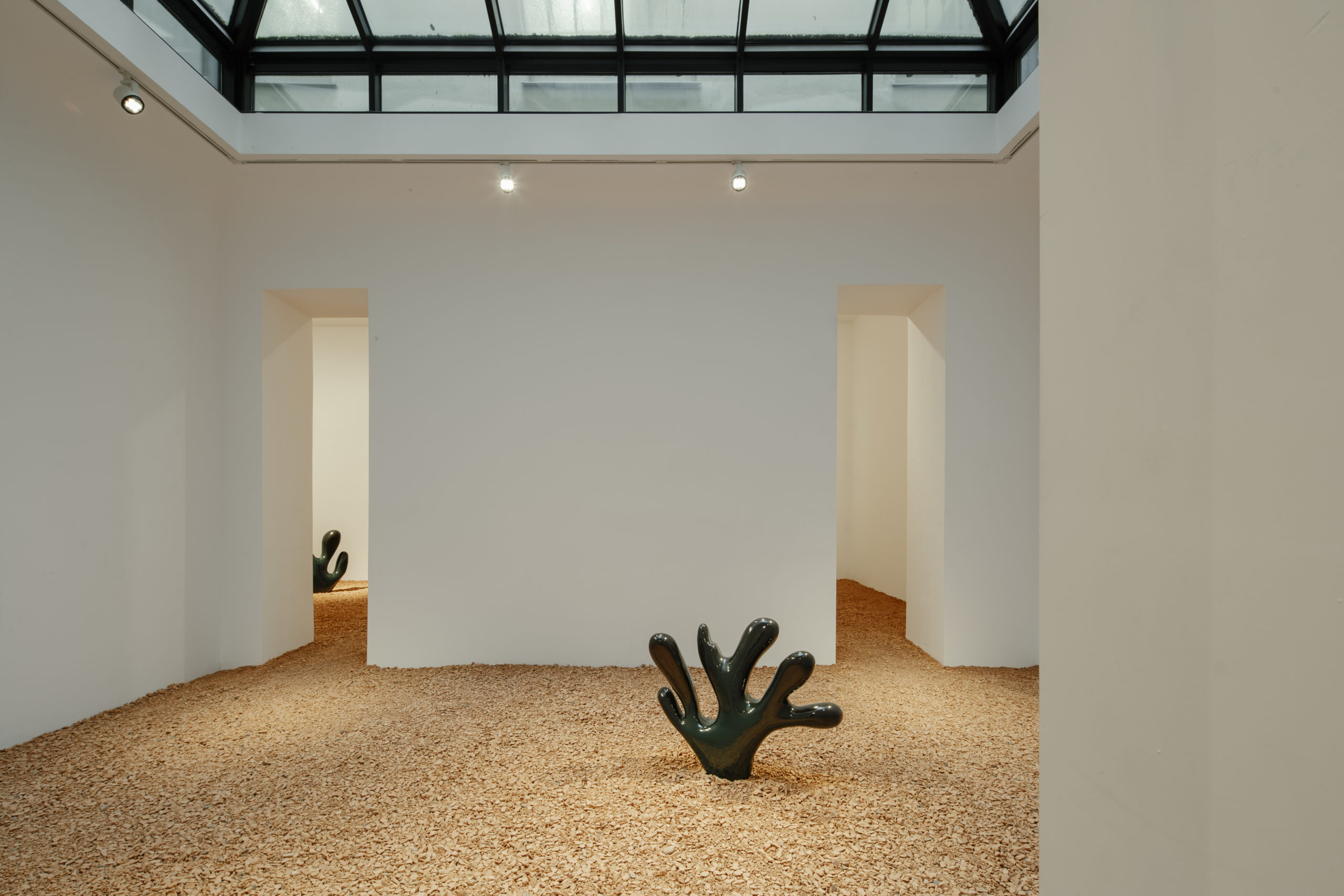Through Dry Ocean Forests, Claudia Comte







03.11 – 10.12.2022
To walk attentively through a forest, even a damaged one, is to be caught by the abundance of life: ancient and new; underfoot and reaching into the light. But how does one tell the life of the forest? We might begin by looking for drama and adventure beyond the activities of humans. Yet we are not used to reading stories without human heroes.
Anna Lowenhaupt Tsing, The Mushroom at the End of the World: On the Possibility of Life in Capitalist Ruins
Through Dry Ocean Forests is a solo exhibition of sculptural works by Claudia Comte conceived as a new chapter on earthly resilience in the wake of anthropogenic disturbance. In each of the gallery’s three floors Comte lingers on a specific material: wood, marble and clay. Each material connects to a broader ecosystem in which notions of destruction and rejuvenation are held in tension. The exhibition explores the logic of nature’s transformative potential and its co-option through these two equivocal forces that have conceptually and materially emblematised pathways to worldly transformation for millennia.
Guided by a longstanding interest in the history and memory of organic forms, Comte’s sculptures embody the energetic morphologies of cacti, leaves and coral. Each piece has been realised through a combination of machine and hand processes, from 3D scanning and printing, moulding and glazing to hand-carving. For the cacti, Comte chose timber hailing from a single Swiss Sequoia tree. For coral – the most threatened lifeform in this assemblage – the artist has chosen a relatively abundant medium: glazed and fired clay. The leaves started life as wood carvings which Comte then scanned, printed and cut in veined Bardiglio marble from Carrara, the hardest and most rarefied material of the three.
Comte’s use of locally sourced timber reflects her ongoing connection to the countryside of her childhood and current home, as environments in which the artist and the forest have grown up alongside one another. Comte uses a chainsaw to begin producing these sculptural forms, a method that allows her to impress the force of bodily exertion on the timber through a series of rough cuts. The imprecision created by this method is important to the artist and brings the process of carving closer to that of drawing. Despite their smoothed and oiled appearance, the forms retain characteristics of their original roughly hewn cuts. The result conjures a hazy landscape of animated cartoons and comics – two long-standing influences on the artist’s work. This gesture transfers the episodic gag of slapstick resilience synonymous with characters like Wile E. Coyote and the Road Runner to the landscape itself. More than pathetic fallacy, Comte seems to be asking whether extending this virtuosity to the perception of all invertebrates and plant life would alter an overriding paternalistic relationship to the natural world.
Comte has approached the three levels of Galería Albarrán Bourdais like geological layers, resurfacing each floor with a thick carpet of broken, spent or crushed matter that correlates to a destructive state from which the sculptures rise. Entering the space on the ground floor, visitors may walk among the giant marble leaves but will be required to tread on a gravel of smashed marble pieces. A smell of burnt wood emanates from the lower ground gallery. Descending there, they will find the cacti standing tall in reference to the Sequoia on a ground of burnt timber. On the top floor ceramic corals stand atop a ground of terracotta splits, their auburn colour contrasting with the sculptures’ deep nocturnal greens.
In this sense, there is no ground in the exhibition that does not implicate the viewer physically and sensorially in the experience of walking in the forest. Whether a real or metaphoric forest, the forest is a space of confrontation with mature life, resilient life, and the realities of climate crisis and forcible destruction, its protectors and advocates. ‘Can I show landscape as the protagonist of an adventure in which humans are only one kind of participant?’ asks Tsing, questing for new and alternative stories of ecological worlding that ‘enlarge what is possible’. Comte too seeks this potential: her sculptures monumentalise nature’s ongoing defiance, rather than elicit nostalgia for habitat or species loss. Here, the artist reaches for an understanding of nature’s resilience to world-ending destruction that is larger than its human vocabulary.
-Gabe Beckhurst Feijoo